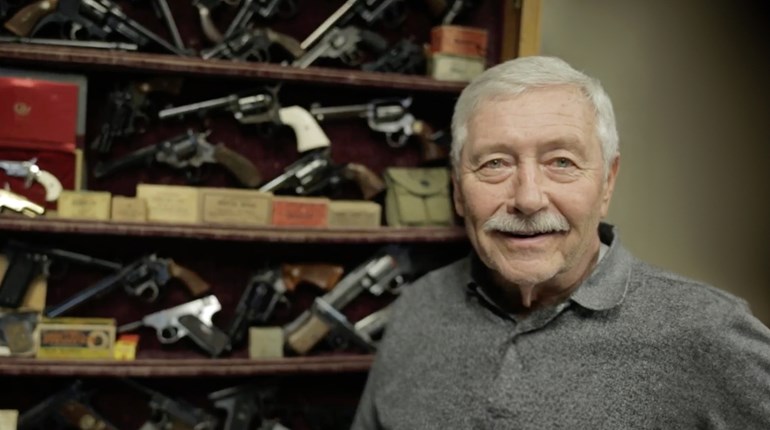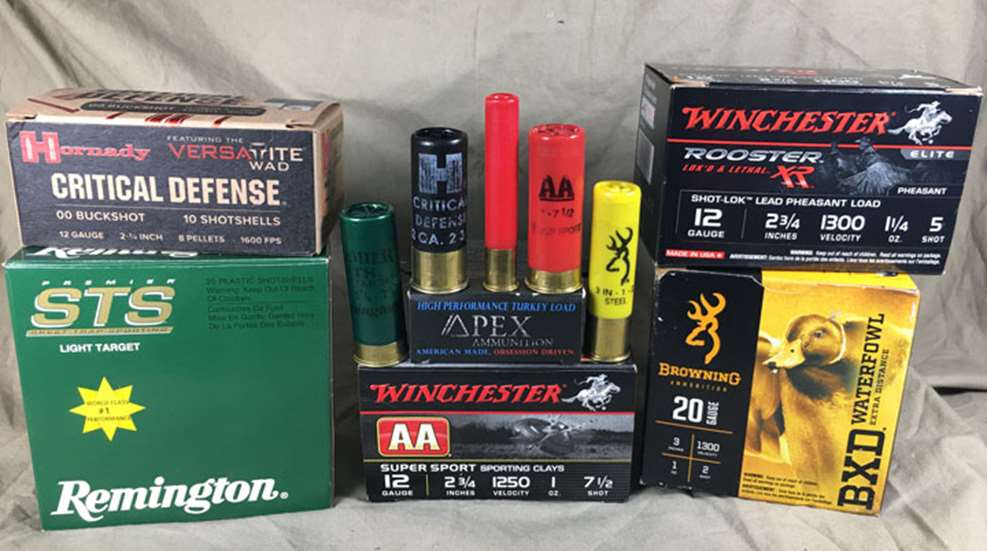
Shotshells are the least understood type of ammunition. Why? It could be that, unlike rifle and handgun loads (i.e. “metallic cartridges”), which conceal only their propellant, the numerous components of shotshells are largely hidden from view—here, the adage “out of sight, out of mind” certainly applies. More likely, though, there’s a widespread misunderstanding among hunters—especially novices—that shotshells are all alike. Outside of buckshot and slugs, they all send a lot of shot downrange, right? True, but such overgeneralizations can negatively affect your hunting success. Like rifle ammunition, it pays to select the optimal load. That requires foresight.
Shotshells are comprised of five basic components: hull, primer, powder, wad and shot. With these, and depending on the load, there can be also be filler wads, nitro cards, buffer and overshot cards, among other things, to adjust load fit and/or enhance downrange ballistics. To better understand shotshells, let’s look at each of the five primary components individually.
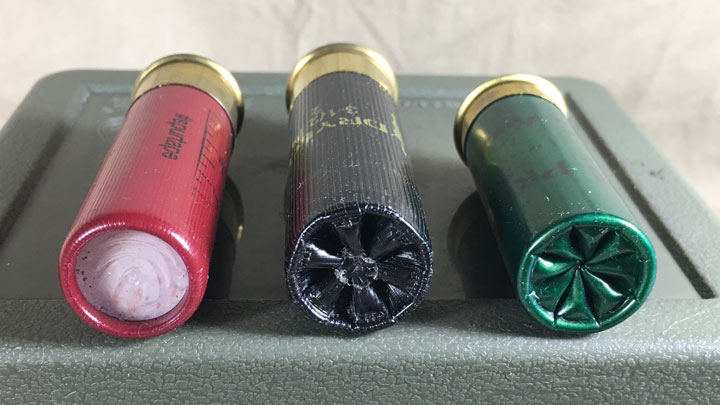
Hulls
The hull is to the shotshell what the case (or “brass”) is to the metallic cartridge—it’s the holder of the components. Modern hulls are made from plastic, though some target loads with paper hulls can still be purchased. The latter is best relegated to clays sports and upland hunting in favorable weather. Plastic hulls will typically be of the tapered, unibody design—one-piece tube, such as used on Remington STS and Winchester AA HS—or straight-wall, three-piece Reifenhauser, such as Federal Gold Medal Grand and Fiocchi. For the non-reloader, it’s a moot point.
At the base of the hull is the head, which holds the primer and facilitates extraction from the chamber. Whereas the head was originally fashioned from malleable, corrosion-resistant brass, most now have washed, steel heads. The exception is premium target loads—again STS and AA HS. Get saltwater spray on the non-brass heads and you’ll quickly see the difference—degradation is rapid. Head heights vary by manufacturer but are unimportant nowadays.
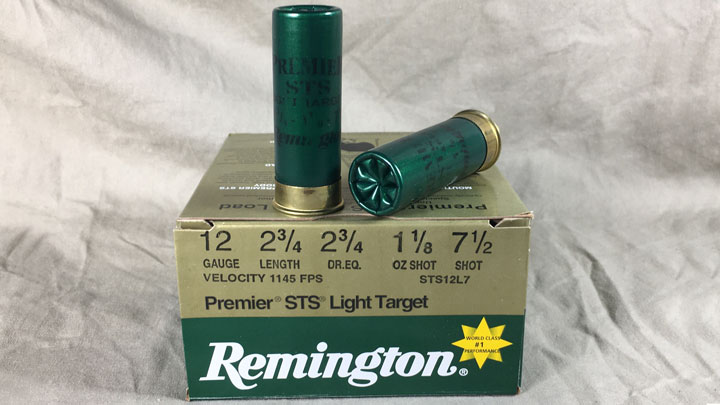
Higher-than-normal heads (i.e. “high brass”) originated with paper hulls to prevent burn throughs from increased, magnum charges of smokeless propellant; with modern plastic hulls, however, elevated heads are unnecessary. Since hunters have long associated “high brass” with magnum loads, though, manufacturers continue to use them to distinguish between heavy-game/magnum and field/target loads. It’s for aesthetics and marketing, nothing else.
At the front of the hull is the crimp. Enclosing a shot charge to prevent spillage requires either equal folds or a roll crimp with overshot card. The majority of shotshells are closed with a six- or eight-fold crimp. Six-folds are best employed for hunting loads featuring larger shot and sub-gauges, while eight-folds works well with smaller shot sizes. Roll crimps, on the other hand, are uncommon outside of slugs. They’re perfect for shells packed to the hilt, such as turkey-specific loads. For example, Federal Premium uses roll crimps on its Heavyweight TSS and Grand Slam offerings. Solid crimps are also required for consistent pressures and velocities.
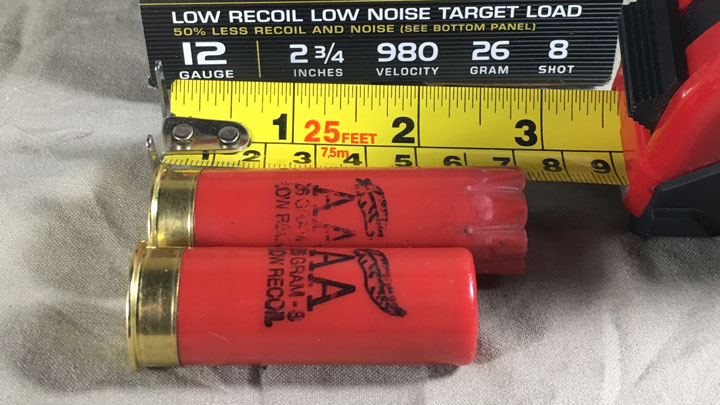
Unbeknownst to many hunters, shell length isn’t determined on the loaded shell; instead, it’s measured before the crimp is applied. For instance, a crimped shell identified as “12-gauge, 2¾ inches” will measure about 2¼ inches. Once fired, it will then measure 2¾ inches. The same applies to 3- and 3½-inch shells; they’re shorter in length before firing. Always follow manufacturer guidelines for shell length requirements for your shotgun.
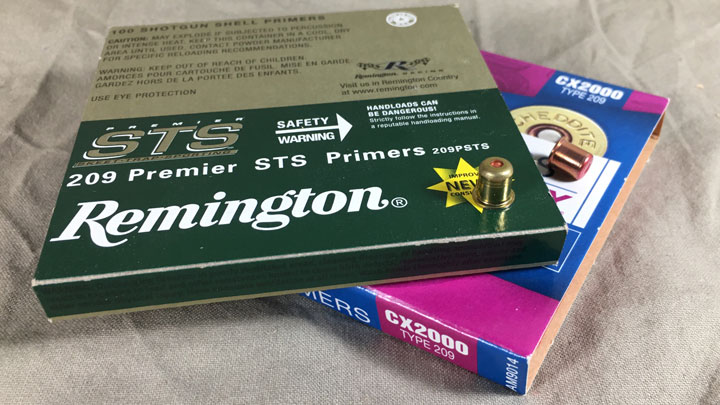
Primer
The primer is the ignition source for the propellant. It contains a priming compound, anvil and cup. Primers vary in flame intensity, spark and burn duration, and are paired with propellants to achieve a desirable pressure curve and velocity through a range of conditions. Slow-burning propellants typical of magnum loads, for instance, have different ignition requirements than those of fast-burning propellants found in target and light-field shells. The manufacturers will determine the best primer for the application. Primers can vary slightly in size; for example, European primers are slightly larger than their American counterparts, so the reloader must be cognizant.
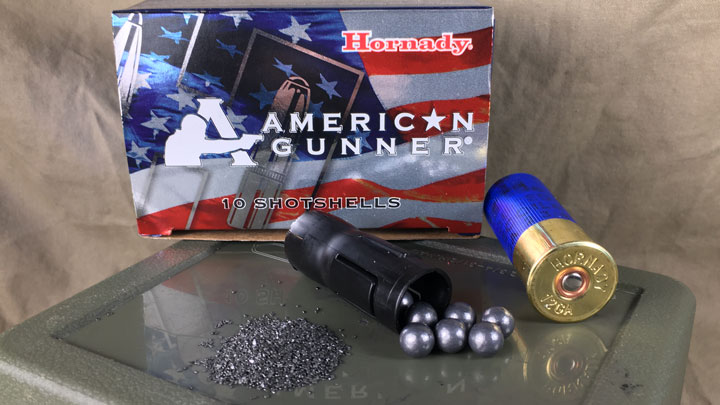
Propellant
When compared to modern, center-fire rifle cartridges, shotshells operate at relatively low pressures. Even the mighty 3½-inch 12-gauge only has a maximum average pressure (MAP) of 14,000 psi. Then again, plastic hulls must contain those pressures. Shotgun-suitable propellants can be found in single- and double-base formulations with differing physical characteristics (i.e. shapes), and additives to achieve a specific burn characteristic. Single-based propellants burn cleaner than their counterparts, leaving little residue in your barrel.
Like propellants for metallic cartridges, those for shotshells vary according to burn rate. Fast-burning propellants propel light payloads of shot to crush clays and down upland species, while medium- and slow-burning powders primarily serve as the propulsion source for pheasant, waterfowl, turkey, coyote and big-game (buckshot and slug) loads. Handloaders often opt for medium-burn-rate propellants for waterfowl loads once the temperature plummets.
Some shotshell boxes still list the dram equivalent—“dr. eq.” or “dram equiv.” According to the NRA Firearms Sourcebook, it’s an “accepted method of correlating relative velocities of shotshells loaded with smokeless propellant to shotshells loaded with blackpowder.” It’s an antiquated system; more telling of the shotshell’s downrange performance is the velocity at which the payload—also identified—is propelled. Ignore the dr. eq.
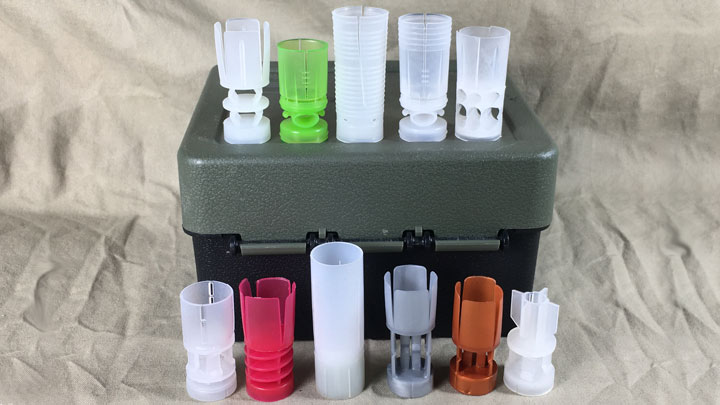
Wads
The wad is an especially critical component of the shotshell, as it serves several functions. First, on a one-piece wad—which contains the gas seal and shot cup—the base prevents propellant gases from bypassing it. If they do, performance is lost. Two-piece wads accomplish the same goal using a separate gas seal. Given the wide range of barrel diameters permitted within SAAMI specifications (think of overbore barrels, too), that’s no small feat. Gas seals also influence ignition and combustion.
Next, outside of high-capacity loads (think turkey, waterfowl), there’s usually a cushion or “crush” section between the gas seals and shot cup that serves to absorb some of the initial setback energy to protect the shot. This is especially important for lead shot and bismuth, which can become misshapen or fracture (older bismuth). Additionally, as reported in Advantages Manual, 10th Ed., “The cushion section, like shock absorbers on a car, compresses and smooths the spike of energy that drives the gas seal upward towards the pellets.” It must also prevent the gas seal from tipping or collapsing. A multitude of designs can be found to accomplish these tasks.
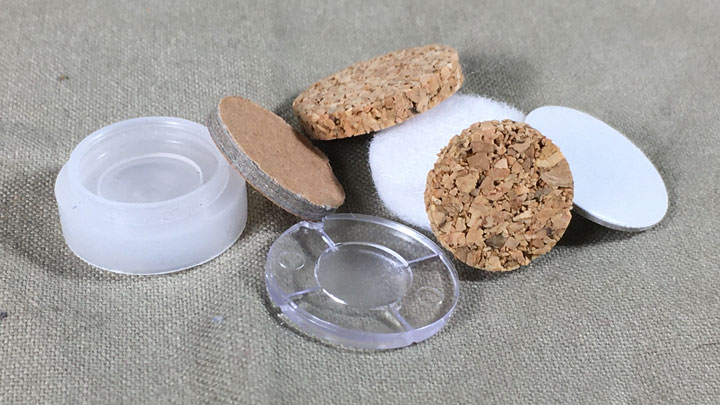
As its name suggests, the shot cup holds the pellets. Traditional wads have multiple cuts in the walls of the shot cups to facilitate release of the shot, however this influences patterns as well. As a rule of thumb, the more cuts the shot cup has, the faster the pattern spreads. Most wads have three to four petals. Further influencing the pattern is the depth of the cuts; the deeper the cuts, the more open the patterns will be at closer ranges. The thickness of the shot cup material also affects pellet distribution. As the shot is contained within the shot cup when traversing the choke, its thickness can be added to the choke constriction. Consider this when selecting a shell/choke combination for spring gobbler season. Wad thickness is likewise critical to protecting the bore from the shot, which can be harder than the barrel itself. Insufficient width can lead to gouging, especially from tungsten.
Newer, high-performance, one-piece wads, such as the Federal FliteControl Flex, Hornady Versatite and Browning BXD, are designed to maximize patterns at distance, and thus operate somewhat differently from those mentioned above. Slowing the forward momentum, and thus a release of the shot, is a flaring skirt (or petals) integral to the gas seal and, in the case of the Versatite, three mid-body petals. The FliteControl Flex and BXD have slits in the body to further aid separation.
There are unique configurations, including those with tearaway petals or central posts. These are purpose-built to hasten pattern spread, making them great for close-range shots on fast-moving targets such as grouse, quail, chukar and rabbits.
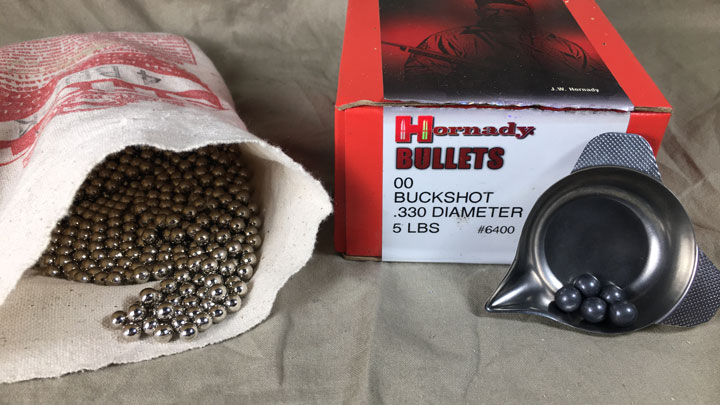
Shot
Shot can be made from a variety of materials. Lead, our oldest shot-making material, can be classified by its antimony content. Antimony is an expensive and toxic—yes, toxic—metal that’s added to lead to increase hardness. Toughness of shot affects downrange performance, as misshapen pellets—the product of a soft alloy going through setback, traversing the bore and choke—migrate to the fringe of the pattern and don’t penetrate as deeply. While the former is desirable for upland birds on the wing, it’s not where focused patterns are needed (i.e. turkeys).
Seldom encountered, “drop shot” is nearly pure lead and is worthless as a pellet-making material. “Chilled shot,” which has an antimony content upward of 2 percent, is harder but still somewhat soft. It’s useful for high-volume shooting and where fast-spreading patterns are desirable. Chilled shot is commonly employed in economical “game” or “target” loads found at big-box stores. Lastly, “magnum shot,” which has an antimony content typically between 3 and 6 percent, is less prone to deformation, so patterns remain dense downrange. It’s the best choice for most hunting. This is loaded in premium target and hunting shells.
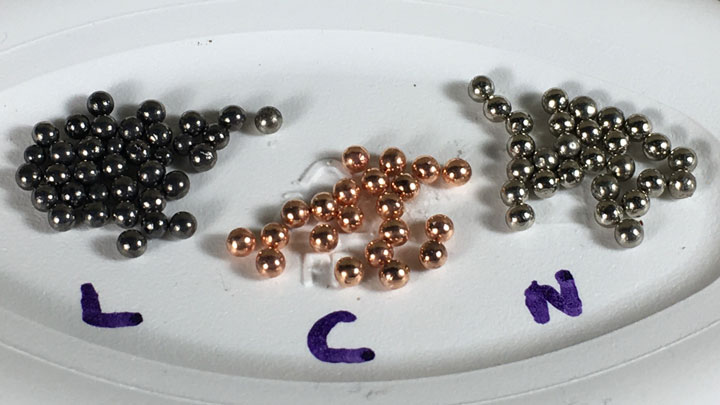
Hardness increases as antimony is added, yet, conversely, density and weight decreases, so the pellets have slightly less energy downrange. This can be countered by selecting a larger pellet size. Lead shot can also be plated with copper or nickel to enhance performance. Hard, copper-plated pellets better maintain their shape, and their smooth surface is less likely to snag feathers that lessen penetration. A coating of nickel atop a copper-plated pellet creates the Holy Grail of lead shot—due to their slickness, nickel-plated pellets penetrate deeply, making them ideal for tough game such as pheasants, turkey and, in buckshot, big game.
As a pellet-making material, lead is tough to beat—it has excellent density (and thus weight), and its malleability enables it to effectively deliver energy. It’s also inexpensive to boot. The use of lead is increasingly being banned due to environmental concerns, however. That’s where lead-free materials come in.
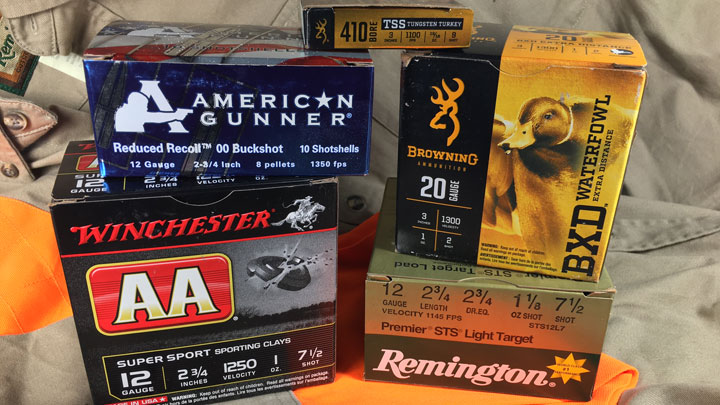
Since the ban of lead for waterfowling, manufacturers have steadily introduced replacement materials for lead. Steel is most prevalent because it’s the most economical. Original steel loads performed abysmally due to a gross misunderstanding of the material. Fortunately, ammo makers and hunters have learned that steel’s low density requires it be propelled faster than lead to be equally effective. Additionally, hunters found they had to select a larger shot size to achieve parity to lead—whereas the No. 4 lead was once the standard for ducks, steel No. 3s and No. 2s were needed. No. 5s and No. 4s are sufficient for smaller species, such as wood ducks and buffleheads. No. 1 to T are good for geese. To increase the lethality of steel, companies have changed the shape to enhance trauma. Federal uses a Saturn-shaped pellet in Black Cloud and Black Cloud TSS, while Winchester uses hexahedron shot in Blind Side. Both work well. As a whole, steel shot is a reliable performer when used at realistic ranges.
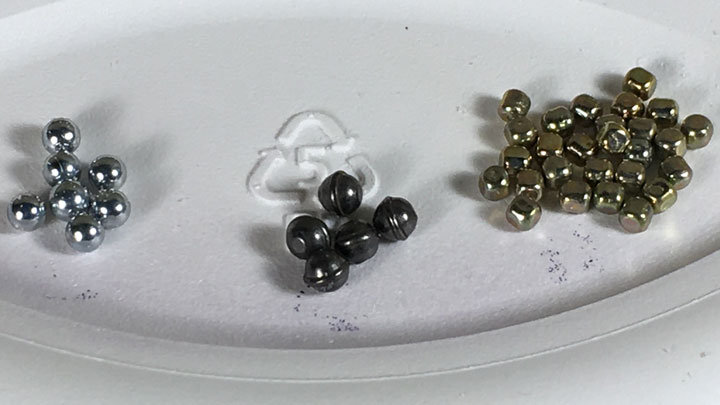
Other shot types have featured one or more of the following materials: bismuth, iron, nickel, tin, copper, tungsten and polymer/binders. Density varies based upon composition, running from 9.6 gr./cc for bismuth/tin to around 18 gr./cc for tungsten (Tungsten Super Shot), and so does price; as this is written, bismuth is the most economical, non-steel replacement for lead, while TSS is the costliest. With price, of course, comes an increase in performance. Increased density translates to more on-target energy and deeper penetration at longer ranges. For example, whereas lead has a density of 11.34 gr./cc, TSS’s 18-plus gr./cc enables you to select a smaller pellet size (i.e. No. 7 instead of 5) and achieve similar energy levels. Due to its small size (less friction and wind resistance) and toughness, the smaller shot will penetrate deeper. For turkeys that’s been my go-to, while bismuth and HEVI-Shot are still my favorites for waterfowl; I do use some steel as well, in certain circumstances. Choose what’s in your budget but will give you the best performance. Remember, hunting time is short, so use the best you can to tip the odds in your favor.
Concerning pellet sizes, they run from 0000 to No. 12; seldom are the extremes encountered. When using lead, No. 4 to No. 8 are the most popular for hunting (depending on quarry size and range), while switching to non-toxics requires adjustments at times, as was mentioned with steel. Manufacturer recommendations printed on shotshell boxes are good resources, so use them for guidance when choosing a shot size. Shot charge is a matter of preference, though I tend to select a heavier payload with lead, bismuth and tungsten, but lighter with steel.
Lastly, when hunting big game, there are buckshot and slug loads from which to choose. Buckshot is available in sizes 0000 to No. 4, with smaller gauges typically featuring No. 1 or smaller. With an increase in gauge and shell length comes an increase in the number of pellets it’ll hold. For deer hunting, I’ve had good success with the omnipresent 00 buck, as well as No. 3 (20-gauge) and No. 4. The latter is also a solid choice for calling coyotes. Pick the biggest buckshot that’ll effectively pattern in your gun, and hold to distances where it will deliver a swift kill.
As for slugs, they range from round ball (handloading required) and Foster-type slugs, to modern sabot rounds. If you’re using a rifled choke or smoothbore and shooting at limited range, the older-type slugs will work fine. To maximize distance, however, you’ll need the accuracy, velocity, and trajectory afforded by a sabot slug fired from a fully rifled barrel. With some slugs, such as Winchester’s 20-gauge Dual Bond, in a Savage Model 220 slug gun, I’ve seen accuracy that’ll rival a better-than-average rifle at 100 yards.
There’s a lot more to shotshells many hunters realize. Knowing what you now do, you’re ready to select the right shell for the hunt, regardless of the quarry.














